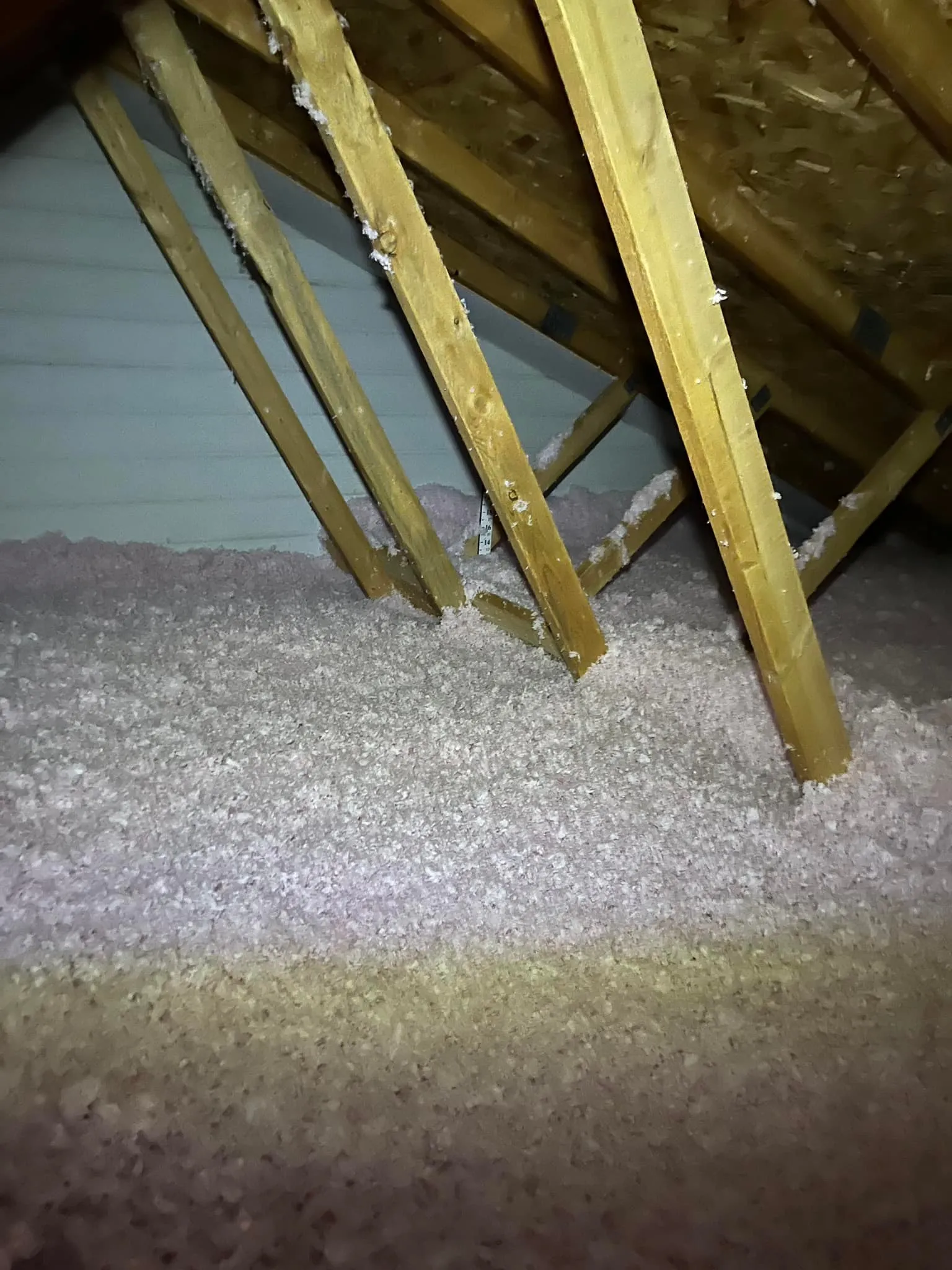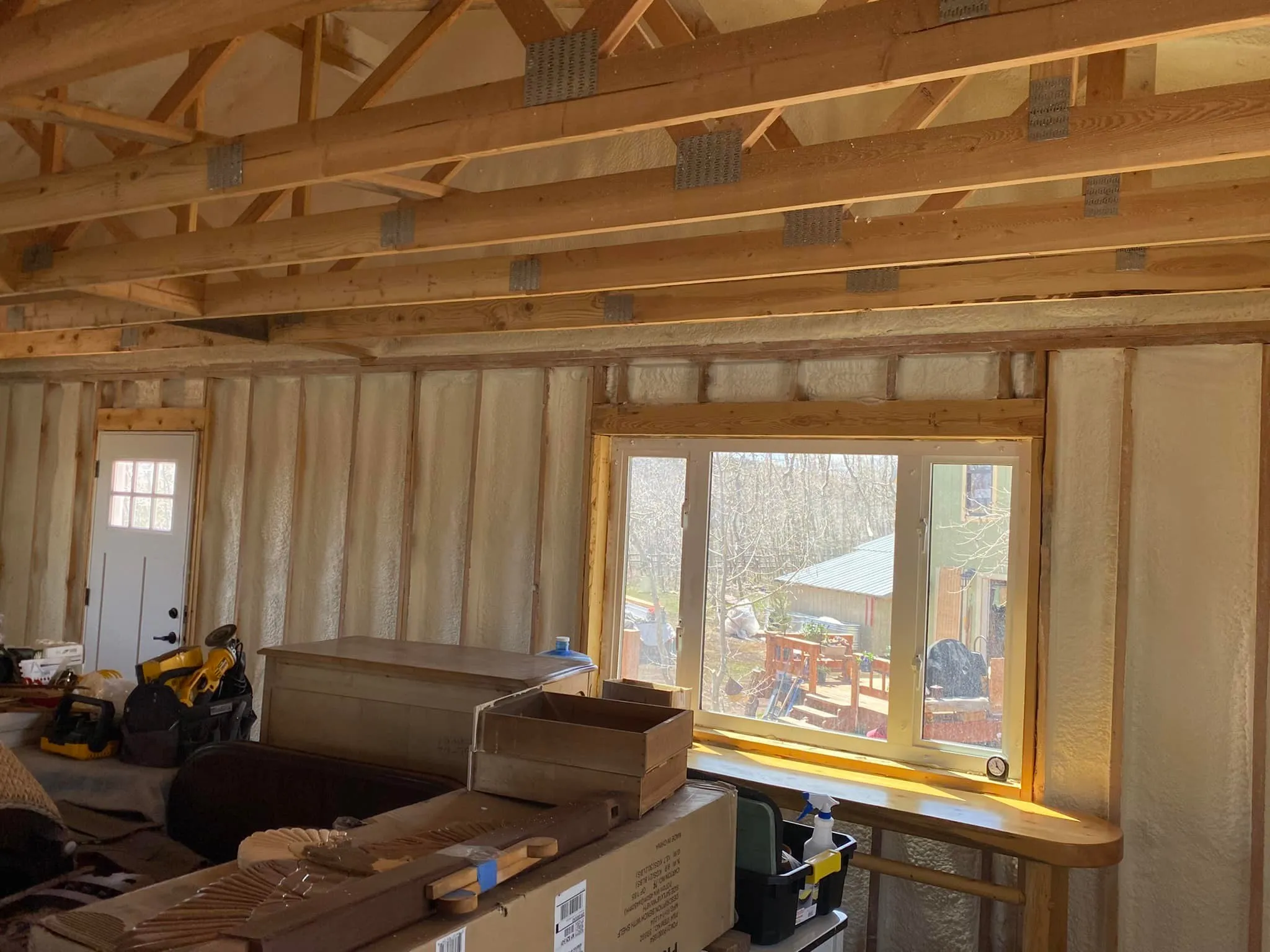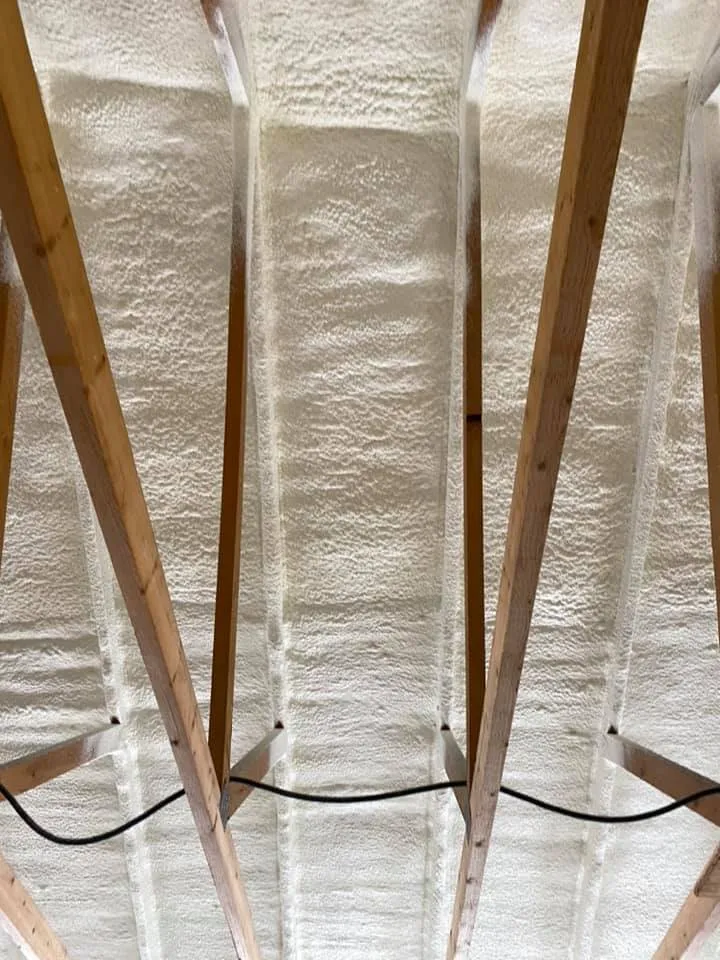
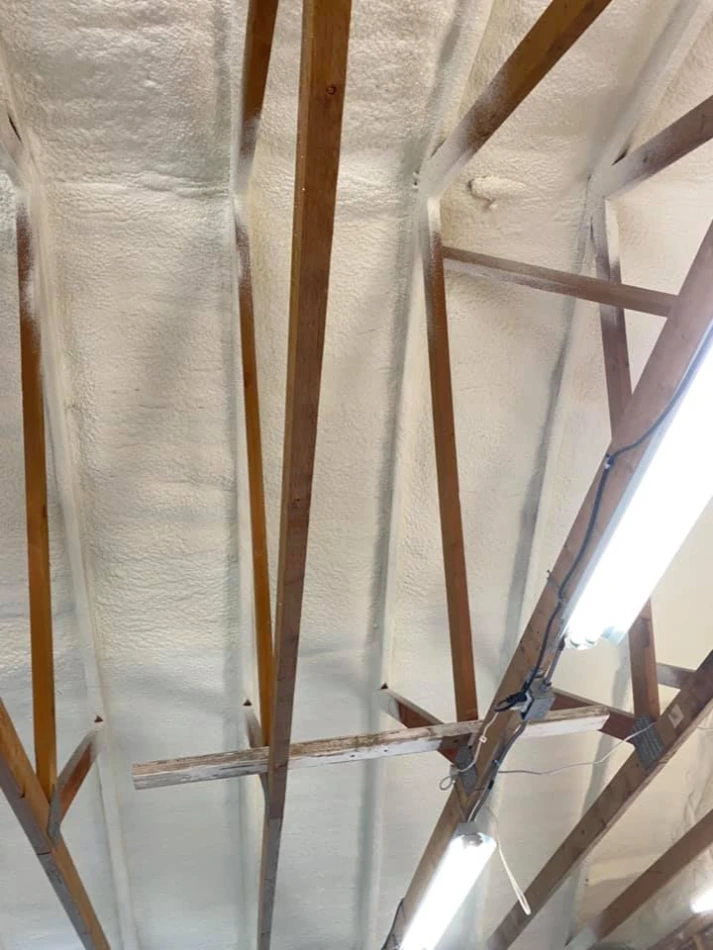
Spray foam insulation on ceilings offers superior thermal resistance, air sealing, and moisture control compared to traditional materials. It helps maintain indoor temperature stability, reduces HVAC workload, and limits energy waste, particularly in homes or buildings exposed to extreme seasonal shifts. Whether applied to attics, cathedral ceilings, or metal-roofed structures, spray foam improves building performance across all climate zones.
In both residential and commercial settings, ceiling insulation is often a major weak point for air loss and energy inefficiency. High Country Solutions applies tested field methods to improve insulation outcomes with either open or closed cell spray foam, based on building design and environmental needs. This article breaks down the technical, performance, and practical aspects of using spray foam insulation on ceilings.
Spray foam provides high R-values per inch, minimizing heat transfer through ceiling assemblies. This performance reduces HVAC cycling, which cuts long-term energy use.
Bonus Tip: In cold climates, applying closed cell foam directly under roof decks helps reduce ice dam formation by minimizing heat loss.
Spray foam expands to seal gaps and voids, forming a continuous barrier against air leaks and moisture infiltration. This tight seal contributes to better indoor air quality and reduced condensation risks.
For added perspective, spray foam updates show that more property owners are turning to foam because of its superior moisture resistance in ceiling assemblies.
Bonus Tip: For vented attics in dry regions, open cell foam is often sufficient and more vapor permeable, allowing trapped moisture to escape.
Closed cell spray foam adds stiffness to ceiling framing by bonding tightly to roof sheathing. Both foam types reduce sound transmission from outside or between floors.
| Feature | Open Cell Spray Foam | Closed Cell Spray Foam |
|---|---|---|
| R-Value per Inch | ~3.6 | ~6.5 |
| Vapor Permeability | High (Breathable) | Low (Moisture Barrier) |
| Air Sealing | Excellent | Excellent |
| Sound Dampening | Superior due to softness | Moderate |
| Structural Rigidity | Low | High |
| Cost Efficiency (Per Inch) | More coverage per dollar | Higher cost but better insulation ratio |
| Ideal Use Case | Vented attics, mild climates | Unvented attics, cold or humid climates |
| Specification | Open Cell Foam | Closed Cell Foam |
|---|---|---|
| Application Thickness (Ceilings) | 6″ to 10″ | 2″ to 4″ |
| Water Absorption | 25% to 30% (by volume) | <2% (by volume) |
| Sound Transmission Class (STC) | ~37 | ~30 |
| Vapor Retarder Rating (per inch) | >10 perms | <1 perm |
| Fire Rating (with thermal barrier) | Class I | Class I |
Source: Building Science Corporation (BSC), Spray Polyurethane Foam Alliance (SPFA)
In cold-dry zones like Wyoming, High Country Solutions often applies closed cell foam on ceilings beneath unvented roof decks. This approach adds thermal insulation and moisture control where snow and wind-driven rain pose risks. Open cell foam is more common for vented attics or buildings with moderate moisture exposure.
Wind uplift resistance is a practical concern in exposed ceiling assemblies. Closed cell foam offers adhesive reinforcement that protects roof integrity, especially in agricultural or commercial buildings.
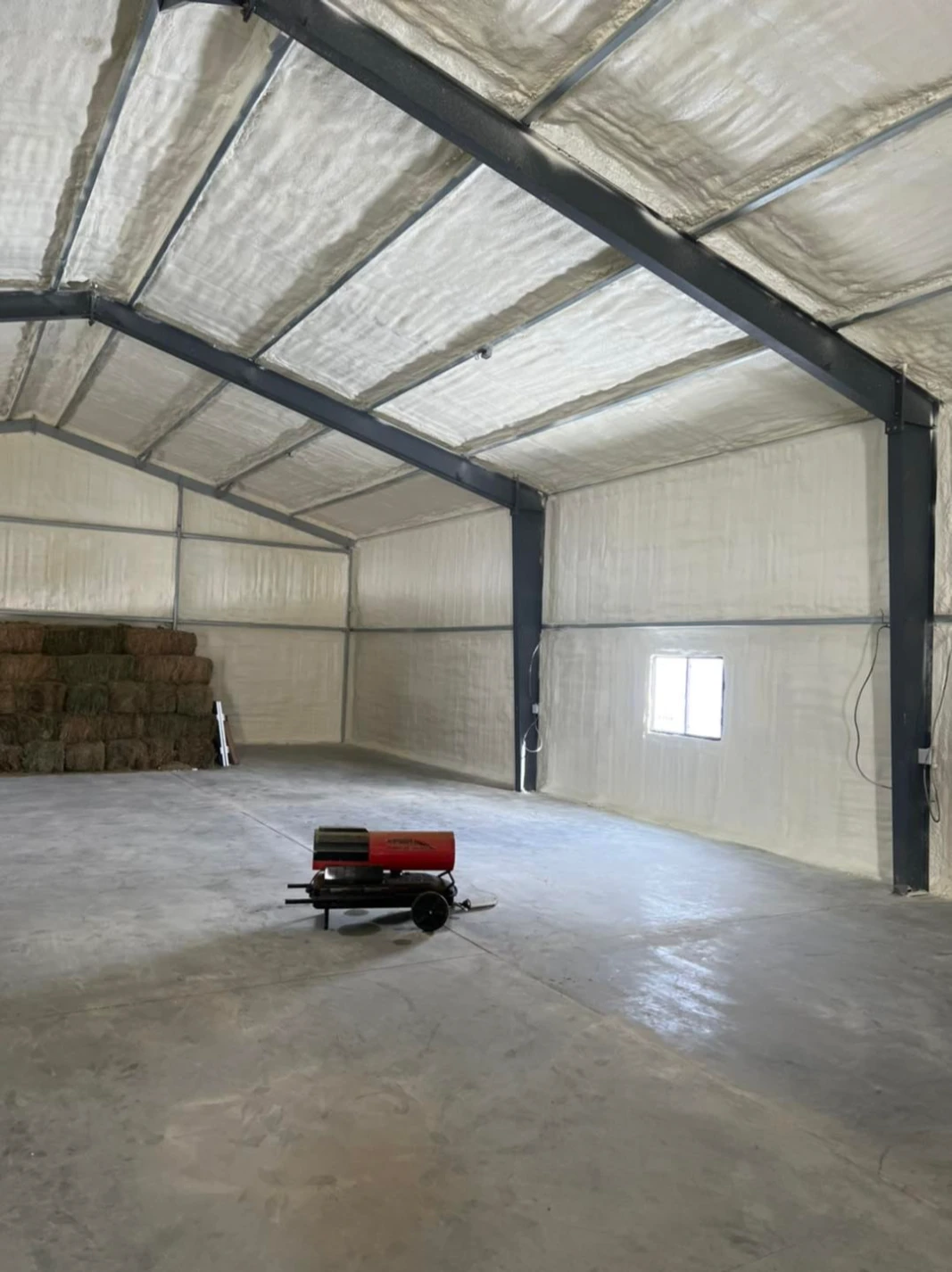
High Country Solutions offers targeted insulation services designed to meet ceiling-specific needs:
Closed-cell spray foam is best for ceilings in unvented, humid, or cold-climate areas due to its moisture resistance and higher R-value. Open-cell works well in vented attics or where sound absorption is the main goal.
Yes. Applying closed-cell spray foam under roof decks minimizes heat loss, which helps prevent ice dam formation and adds structural support to the ceiling assembly—especially important in snowy regions like Wyoming.
Spray foam changes ventilation requirements, especially in unvented ceilings. Proper design and adherence to local codes—including thermal barrier coatings—are essential for safety and long-term performance.
Spray foam insulation on ceilings enhances thermal resistance, blocks air leaks, and limits moisture problems more effectively than traditional materials. Closed cell foam is suitable for structural strength and moisture-prone settings; open cell works well for sound control and mild climates. Evaluating building structure, code compliance, and climate helps select the right approach.
For more information on ceiling insulation with spray foam, contact High Country Solutions at [email protected] or call (307) 248-9063. Discuss your project goals with experienced professionals who apply insulation solutions for long-term performance and environmental control.
Closed cell foam usually requires 2 to 4 inches; open cell may need up to 10 inches for equivalent thermal resistance.
Closed cell foam is preferred in vaulted ceilings due to its lower vapor permeability and higher R-value per inch.
When installed without proper vapor control in humid zones, open cell foam may trap moisture. Using closed cell or adding vapor barriers mitigates this.
Open cell foam provides superior sound dampening across ceiling cavities, especially in noisy urban or rural roadside settings.
Spray foam insulation maintains its structure and performance for over 30 years when properly installed.
Yes, spray foam can be applied during renovations by accessing attic cavities or removing ceiling drywall temporarily.
Unvented spray foam ceilings often eliminate the need for passive roof ventilation. Design must account for controlled ventilation instead.
Installers must wear protective gear, and spaces must be ventilated until curing completes. Occupants should stay out for at least 24 hours post-installation.

